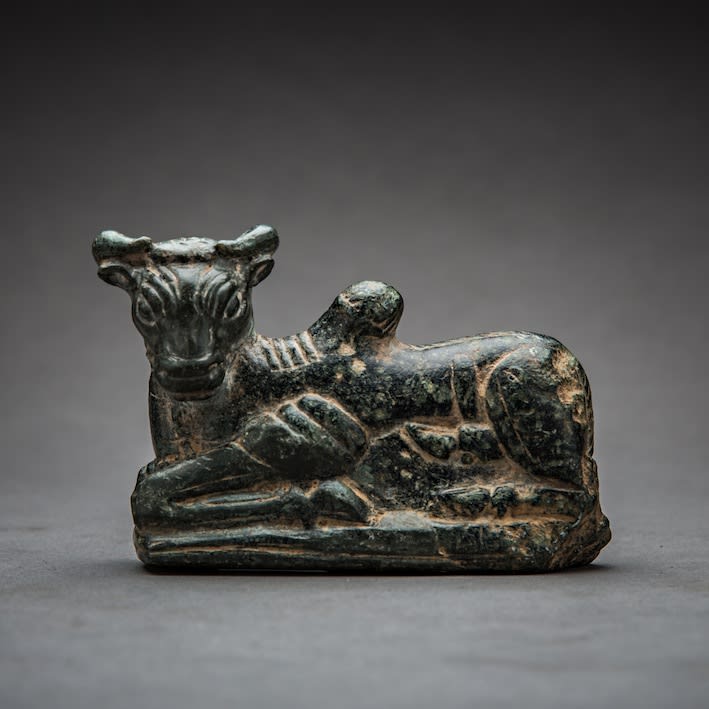Stone Sculpture of a Recumbent Bull, 1900 BCE - 1300 BCE
Stone
7 x 10.2 cm
2 3/4 x 4 in
2 3/4 x 4 in
X.0448
Further images
In the ancient Near Eastern, the bulls, a symbol of strength and potency, are commonly represented. Among the types of animal images, bulls can be found on funerary stelae, seals,...
In the ancient Near Eastern, the bulls, a symbol of strength and potency, are commonly represented. Among the types of animal images, bulls can be found on funerary stelae, seals, and sculptures of the period. Possession of a bull was a significant status-symbol. Cattle were so economically important, that they became means of exchange. Even when means of exchange became monetary tokens, the first such tokens were representations of the stretched hide of cattle. Bulls pulled carts and ploughs, enabling the farmer to work significantly larger plots of land than was possible by manpower alone. It was this capacity to produce large surpluses with less effort which freed up a significant portion of the population to move away from their farmland and into the cities. The bull is, resultantly, one of the most important iconographical symbols across the Near East and Mediterranean. For the Mesopotamians, bulls were important as guardian figures, in much the same way as Gugalanna guarded the heavens. Lamassu, the guardian who was often found in doorways and archways throughout Mesopotamia, well into the later Achaemenid era, was an androcephalic (‘human-headed’) bull. This remarkable sculpture of a Recumbent Bull stands as a testament to the sensitivity of ancient Near Eastern artists.





